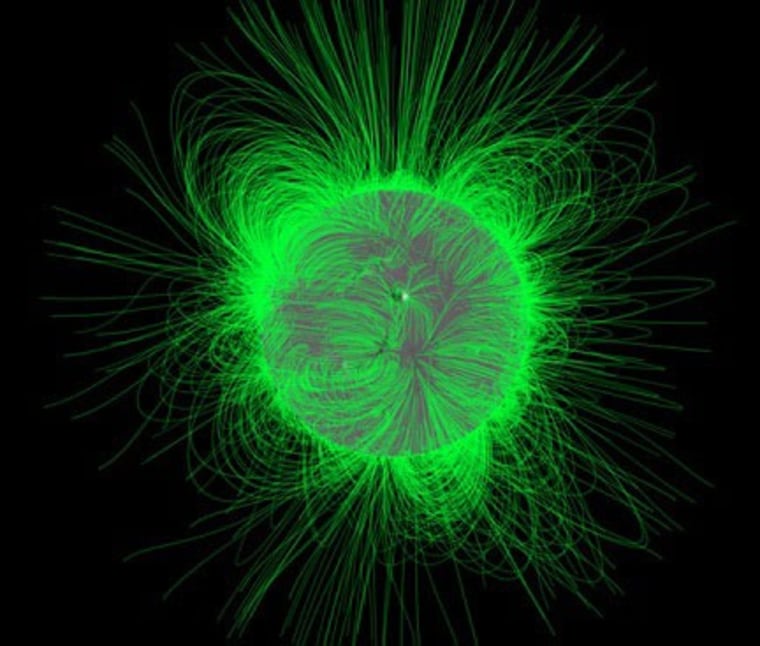A new solar telescope, scheduled to launch this winter, will probe the sun's atmosphere and inner workings, helping scientists better understand how solar storms.
During its five-year mission, the Earth-orbiting Solar Dynamics Observatory (SDO) will seek to reveal how the sun's magnetic field works, what governs the ups and downs of the solar cycle and how solar activity affects Earth.
"The sun is a magnetic variable star that fluctuates on times scales ranging from a fraction of a second to billions of years," said Madhulika Guhathakurta, lead program scientist for the Living With a Star program (of which SDO is a part) at NASA Headquarters in Washington, D.C. "SDO will show us how variable the sun really is and reveal the underlying physics of solar variability."
Tracing magnetic fields
SDO will measure and observe the sun's magnetic field, which powers all solar activity. Flow of hot, ionized gases in the sun's convection zone — the region inside the sun where hot gas parcels rise and transport energy to the surface — act as electrical currents to generate the sun's magnetic field.
The observatory will look at the fields at the surface of the sun and use those measurements to infer exactly where the fields originate inside the sun and where they are expressed as active regions, such as sunspots and coronal loops, to where they eject particles into space as coronal mass ejections and solar flares (both of which can impact the function of satellites and electrical grids on Earth).
The goal is to better understand how the sun's magnetic field is generated and how its energy impacts solar radiation, which in turn affects the rest of the solar system, including Earth.
Ups and downs
Slideshow 12 photos
Month in Space: January 2014
SDO will also follow changes in the sun's activity, which is known to rise and fall on a roughly 11-year cycle. A solar cycle is at its maximum when the greatest number of sunspots is counted in a year; the minimum occurs when the fewest are seen. Both of these markers can only be recognized after they have been passed.
And of course, the solar cycle doesn't always follow that 11-year course. Between 1645 and 1715, for example, sunspots were rarely observed — a period called the Maunder Minimum — and Europe and North America both experienced bitterly cold winters — a time known as the "Little Ice Age." (The sun is currently in a lull, with next maximum expected in 2013.)
The potential connection between low levels of solar activity and Earth's climate are something scientists want to better understand in the hopes that they could eventually learn to predict these ups and downs.
Tools for the job
To make all of these observations, SDO will use three science instruments:
The Helioseismic and Magnetic Imager (HMI) will peer into the sun and map the surface of the sun's magnetic fields, as well as the plasma flows that generate magnetic fields.
The Atmospheric Imaging Assembly (AIA) will image the solar atmosphere in multiple wavelengths that cannot be seen from the ground. HMI and AIA will together link changes on the solar surface to the sun's interior.
The Extreme Ultraviolet Variability Experiment (EVE) will measure how much energy the sun emits at extreme ultraviolet wavelengths, which can only be observed from space because they are completely blocked out by Earth's atmosphere. These wavelengths of light are important to study because they can affect astronauts out in space.
SDO will watch the sun almost 24 hours a day as it orbits the Earth in a figure-eight path. The spacecraft will take images of the sun every few seconds with the visual quality of an IMAX movie, giving scientists an unprecedented look at our parent star.

